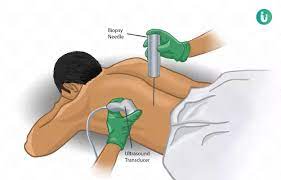A biopsy is a sample of tissue taken from the body in order to examine it more closely. A doctor should recommend a biopsy when an initial test suggests an area of tissue in the body isn't normal.
Doctors may call an area of abnormal tissue a lesion, a tumor, or a mass. These are general words used to emphasize the unknown nature of the tissue. The suspicious area may be noticed during a physical examination or internally on an imaging test.
Why Are Biopsies Done?
Biopsies are most often done to look for cancer. But biopsies can help identify many other conditions.
A biopsy might be recommended whenever there is an important medical question the biopsy could help answer. Here are just a few examples:
- A mammogram shows a lump or mass, indicating the possibility of breast cancer.
- A mole on the skin has changed shape recently and melanoma is possible.
- A person has chronic hepatitis and it's important to know if cirrhosis is present.
In some cases, a biopsy of normal-appearing tissue may be done. This can help check for cancer spread or rejection of a transplanted organ.
In most cases, a biopsy is done to diagnose a problem or to help determine the best therapy option.
Types of Biopsies
There are many different kinds of biopsies. Nearly all of them involve using a sharp tool to remove a small amount of tissue. If the biopsy will be on the skin or other sensitive area, numbing medicine is applied first.
Here are some types of biopsies:
Needle biopsy. Most biopsies are needle biopsies, meaning a needle is used to access the suspicious tissue. CT-guided biopsy. A person rests in a CT-scanner; the scanner's images help doctors determine the exact position of the needle in the targeted tissue.
Ultrasound-guided biopsy. An ultrasound scanner helps a doctor direct the needle into the lesion. Bone biopsy. A bone biopsy is used to look for cancer of the bones. This may be performed via the CT scan technique or by an orthopedic surgeon.
Bone marrow biopsy. A large needle is used to enter the pelvis bone to collect bone marrow. This detects blood diseases such as leukemia or lymphoma.
Liver biopsy. A needle is injected into the liver through the skin on the belly, capturing liver tissue. Kidney biopsy. Similar to a liver biopsy, a needle is injected through the skin on the back, into the kidney. Aspiration biopsy. A needle withdraws material out of a mass. This simple procedure is also called fine-needle aspiration.
Prostate biopsy. Multiple needle biopsies are taken at one time from the prostate gland. To reach the prostate, a probe is inserted into the rectum. Skin biopsy. A punch biopsy is the main biopsy method. It uses a circular blade to get a cylindrical sample of skin tissue.
Surgical biopsy. Either open or laparoscopic surgery may be necessary to obtain a biopsy of hard-to-reach tissue. Either a piece of tissue or the whole lump of tissue may be removed.
